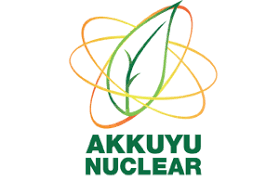There have been no reports of damage to the Akkuyu nuclear power plant after two big earthquakes struck Turkey. The project teams says that after safety checks, construction is continuing.
Anastasia Zoteeva is the CEO of JSC Akkuyu Nuclear. She said last Monday, “Aftershocks of about 3.0 magnitude were felt here at the Akkuyu NPP site, but our specialists did not detect any damage to building structures, cranes, equipment, Nevertheless, we are carrying out extensive diagnostic measures to make sure that construction and installation operations can continue safely.”
Later on Monday, Russia’s Tass news agency reported an update issued by a spokesperson for Akkuyu Nuclear. The update said, “specialists conducted a prompt, operational inspection of all buildings, structures, tower cranes, scaffolding and other structures under construction for deviations and damage. No damage was found as a result of the inspection. Construction and installation work continues.”
The International Atomic Energy Agency tweeted on Monday afternoon about the situation. The tweet read, “As of now, no impact from earthquakes on nuclear safety & security in Türkiye, its Nuclear Regulatory Authority told IAEA.” The tweet continued, adding that there were “no issues so far related to radiological safety & security of radioactive sources, & the country’s under construction nuclear power plant is unaffected”.
The seven-point eight magnitude earthquake struck near the city of Gaziantep around 4:30 local time. It was the biggest earthquake to hit the country in eighty years. As of Monday at 16:00 GMT there were about two thousand three hundred deaths confirmed in Turkey and Syria. Many more were injured or are still missing. The Akkuyu nuclear power plant is being built in the southern Mersin province about two hundred sixty-seven to the west of the epicenter of the quake.
The Akkuyu plant is the first nuclear power plant constructed in Turkey. The Russian state-owned Rosatom is building four VVER-1200 reactors. The contract is a build-own-operate (BOO) type. Construction of the first unit began in 2018. It is scheduled to go operational in 2023. The four thousand eight-hundred megawatt plant is intended to meet about ten percent of Turkey’s electricity needs.
Nuclear reactors are designed to be able to survive natural hazards such as earthquakes. The Akkuyu plant has been designed with additional earthquake protection measures. These measures include the reactor building foundation slab being designed to be “highly earthquake-resistant”. Tass reported that the Akkuyu “project is designed to withstand a maximum earthquake of up to 9 on the Richter Scale”.
The World Nuclear Association’s information paper on Nuclear Power Plants and Earthquakes said, “Reactors of both western and Soviet design have been subjected to major seismic activity in North America and Europe without damage. California’s power reactors, San Onofre 2 and 3 and Diablo Canyon 1 and 2, continued to operate normally during the 6.6 magnitude earthquake in January 1994. San Onofre, the closer station, was about 112 km from the epicenter. In December 1988, a magnitude 6.9 earthquake, resulting in the deaths of at least 25,000 people, occurred in northwestern Armenia. It was felt at the two-unit Armenian nuclear power station located approximately 75 km south of the epicenter, but both Soviet-designed PWRs operated normally, and no damage was reported. This was the first Russian nuclear power plant specifically adapted for seismic areas, and it started operating in 1976.”
The report also said, “In April 2013 a magnitude 7.7 earthquake in Iran caused no damage [to the Bushehr plant] according to Iran’s report to IAEA, though some cracking of concrete was later reported. The plant is designed to withstand magnitude 8 quakes.”
Nuclear Reactor 1129 – The Akkuyu Nuclear Power Plant Construction Project Was Not Harmed By The Recent 7.6 Earthquake in Turkey

Written by
in
